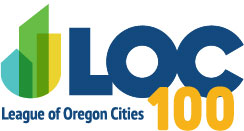LOC News
Additional Details For TRIP 2025 Start to Emerge – Cities Poised for 71% Funding Increase
Cities – Using the base framework document of the Transportation ReInvestment Package (TRIP), the LOC has calculated estimates for each city’s distribution increase at the time of full implementation, which is scheduled to occur in 2032. Cities' proportional distribution is based on population, while counties' distribution is built from vehicle registrations. Cities are expected to gain $170 million annually by 2032-33, which, given the FY 2024 distribution of $238 million, roughly equates to a 71% increase over 8 years.
As the package moves forward this session, the level of local government grassroots education and advocacy needs to intensify and sustain the push for the remainder of the session.
OUR GOAL: Flip the dialogue and make this transportation package about city and county investment and value. After all, your city and your taxpayers will see the benefits in their own community.
Local Grassroots Advocacy is Critical
Cities need to continue communicating in their local area. Now that you have estimated increases available, incorporate these into the possibilities of catching up on the basics, such as fixing potholes and investing in safety improvements. Take the time to write an Op-Ed or a letter to the editor. Work with another city partner, a business, or your county partners to help illustrate that every city and every county will receive a share of revenue generated by the TRIP 2025.
Let them know if you've completed projects and if you have new projects that depend on or benefit from an increased State Highway Fund (SHF). Keep the messaging simple but tie it to local projects and estimate what a 70% increase in your local share would provide in terms of maintenance projects and capital. Several cities prepared white papers on this subject, and to help with framing the messaging, we’ve provided several examples. These are excellent messages that any city can replicate.
Key Messages
- TRIP 2025 is a Back to the Basics transportation package that was built with community input across 13 communities, where 90% of the new revenue will focus on maintenance, safety projects, and operations.
- Every taxpayer in Oregon benefits from the revenue they pay. Fifty percent of the revenue generated is returned to each city and county, helping to fund core maintenance, projects, and operations.
- Forty percent of the city road inventory across Oregon is in poor or very poor condition. With additional funds, cities and counties will be able to invest in maintenance to improve road conditions. Without this funding, potholes won't get fixed, roads will deteriorate, and bridges will continue to decline.
TRIP 2025 Details
A projected funding level of $1.9 billion per biennium is significant because this translates into $340 million of additional revenue to cities per biennium, or $170 million per year.
Public Transit Enhanced - Given a proposed increase in the payroll tax, all communities with public transit will have additional funding available to enhance their services. For rural and frontier communities, TRIP 2025 will expand or initiate public transit options. Currently, all recognized transit agencies, such as TriMet, Cherriots in Salem, and Rogue Valley Transit in Jackson County, receive a funding allocation. In addition to the transit agencies, 22 counties and eight federally recognized tribes receive funds for their programs and distribution to small transit programs.
Electric Vehicles Will Pay Their Fair Share - Up until TRIP 2025, capturing a fair share of revenue from electric vehicle (EV) owners has been limited to registration fees, which are double those of an equivalent gas/diesel vehicle. Based on recent data analysis, this captures only about one-third of what would be considered a fair share. Under TRIP 2025, starting in 2026, all existing EVs will transition to a Road User Fee (RUF) structure, whereby EV owners will pay an equivalent tax for their vehicle usage by 2028. Today, with over 100,000 registered EVs, the addition of a RUF equivalent to .40 state gas tax would generate an estimated $14 million in new revenue.
There will also be an anticipated fee associated with using public charging stations to capture a RUF for vehicles registered outside of Oregon.
Oregon has the lowest vehicle-related tax burden among western states. The Oregon Department of Transportation (ODOT) has updated several metrics related to buying and operating vehicles in Oregon. When you look at a metric that is just a new vehicle purchase, it's clear that Oregon vehicle owners pay markedly less than the next closest state of Idaho. The LOC built a comparison using a $40,000 vehicle purchase, each state’s gas tax, and average miles driven in each state. Based on this, Oregon’s estimated annual tax burden for a passenger vehicle is $445. With the additions in TRIP 2025, this estimated tax burden is roughly $1,172 by the year 2032 at full implementation. In Oregon, because the one-time system fee of 1% and the vehicle privilege tax of .5% - increasing to .8% under TRIP 2025 - are only applied at the time of purchase and not annually, the additional cost increases under TRIP 2025 drop to approximately $500 for each subsequent year. Note: this is for the costs associated with a single-year vehicle purchase. Other states' registration fees include prorated/or amortized values in the future registration fee structure. Nevada is the highest state to register new vehicles, largely because of a possible 8% sales tax, with California close behind. Idaho is the closest to Oregon in the west, but still more than double the current and roughly 80% higher with TRIP 2025 in place.
Contact: Jim McCauley, Legislative Director - jmccauley@orcities.org
Last Updated 5/9/25

